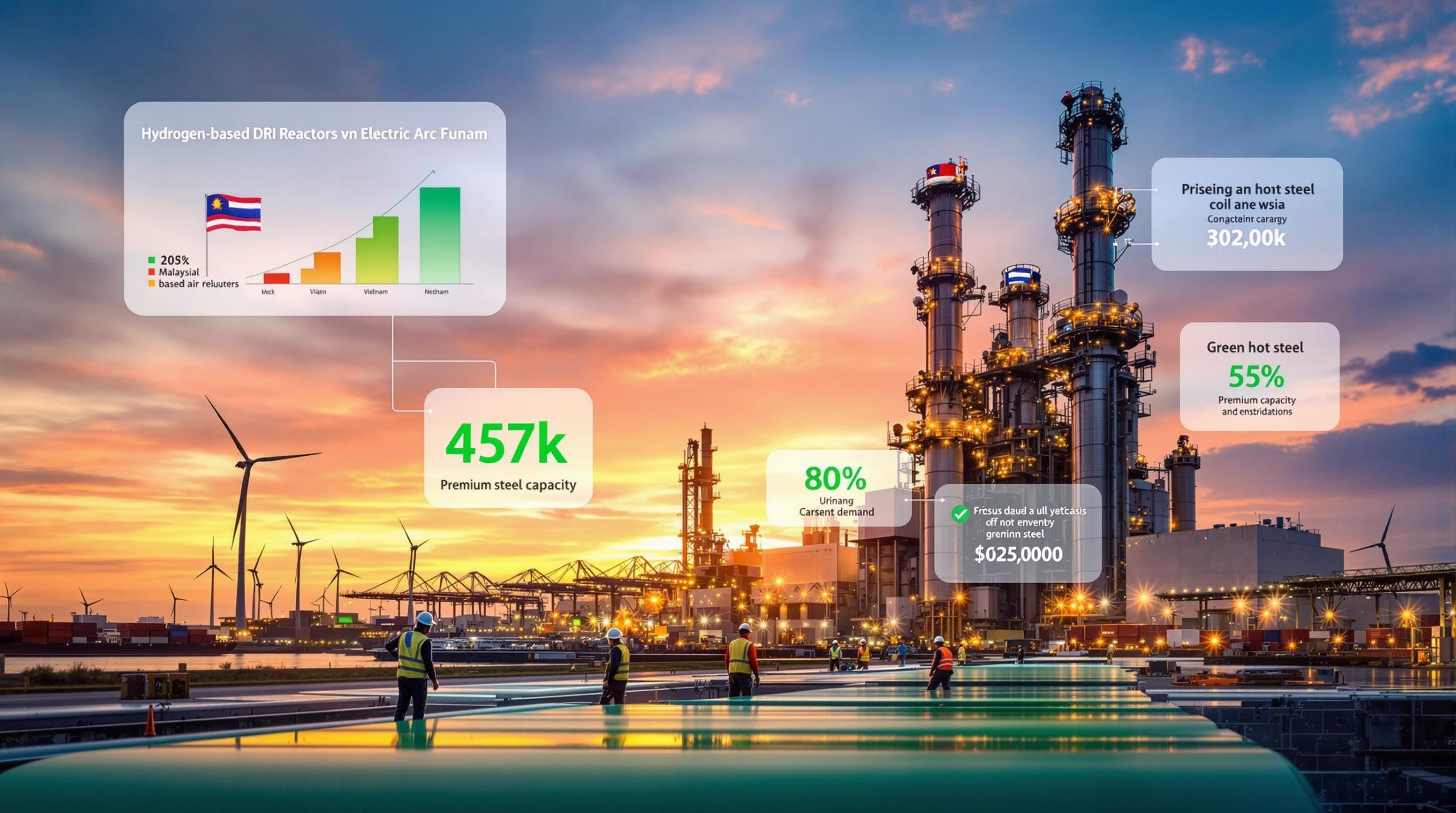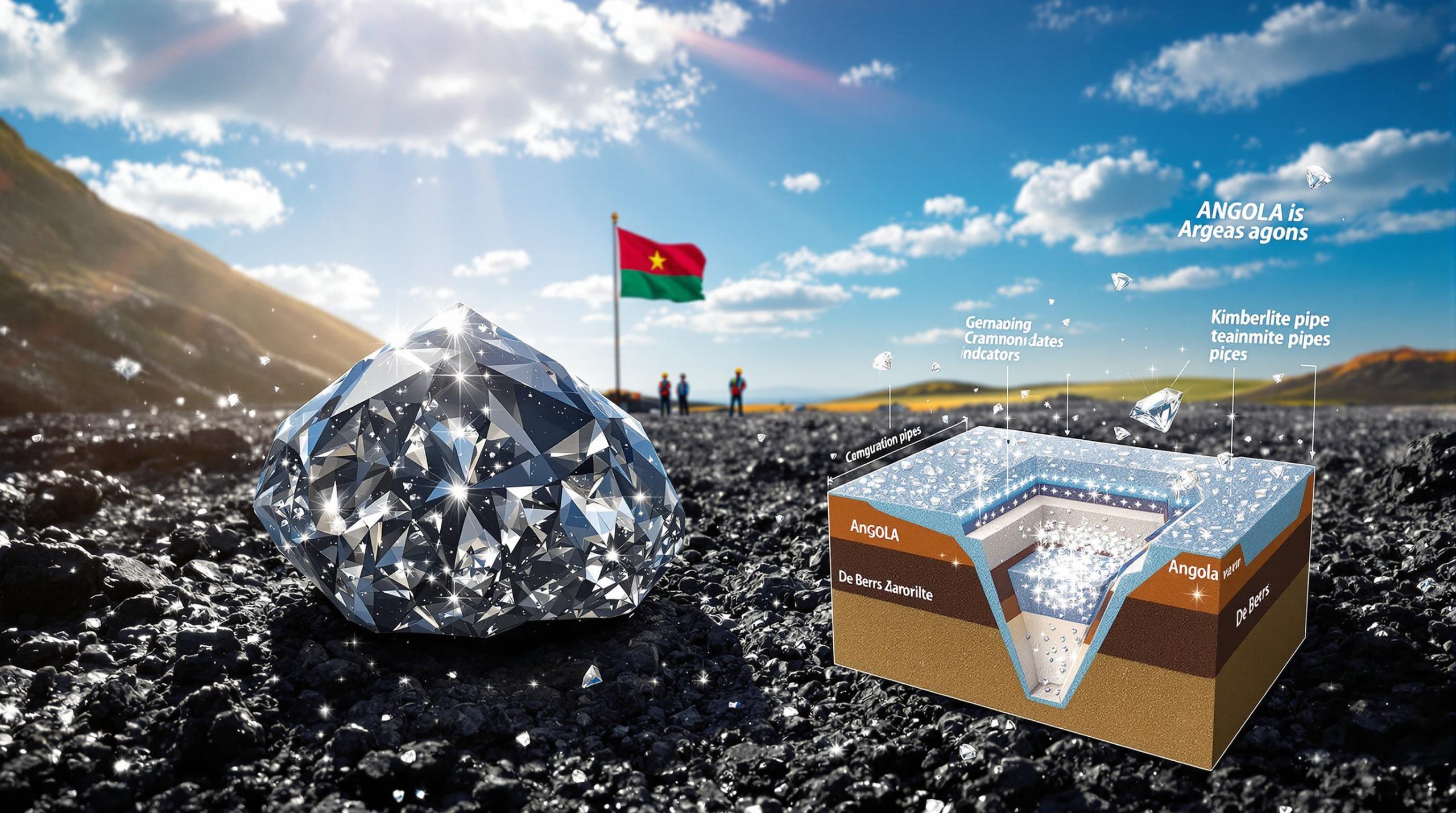Understanding the World's Only Primary Scandium Deposit in Quebec
The global critical minerals landscape is experiencing a potential paradigm shift with the development of what appears to be the world's only primary scandium deposit in Nunavik, Quebec. This unique geological formation represents a breakthrough in scandium supply chains that have historically been constrained by byproduct-dependent production methods.
Unlike conventional sources where scandium emerges as a secondary output from titanium or nickel operations, this Quebec-based deposit allows for direct extraction of scandium as the primary target mineral. This distinction fundamentally changes the economic and strategic calculus for industries dependent on this rare element.
The Uniqueness of Primary Scandium Sources
In the current global market, 100% of scandium production comes as a byproduct of other mining operations. This creates an inherent limitation: scandium supply cannot be increased independently of the main minerals being mined, regardless of market demand.
"If the market evolves, you can increase your production rate and meet additional demand [from primary deposits]. This is very significant because it's going to show a long-term reliable source of supply," explains the project's leadership team. This capability represents a fundamental advantage over byproduct sources where scandium output remains tethered to production rates of base metals.
Primary deposits offer several distinct advantages:
- Independent scaling: Production can be adjusted based on actual market demand
- Supply reliability: Output isn't subject to fluctuations in other mineral markets
- Long-term availability: Resource planning can occur with greater certainty
- Market development: Industries can plan applications knowing supply can grow with adoption
The geological uniqueness of the Quebec deposit stems from its formation as a concentrated scandium resource rather than as a trace element distributed within other mineral deposits—a rarity that positions it as potentially transformative for global supply chains.
Strategic Importance of Scandium
Scandium has been classified as a critical mineral by the Canadian government and numerous other nations, reflecting its strategic importance despite relatively low production volumes. This classification acknowledges both its technological significance and supply vulnerability.
When alloyed with aluminum, scandium creates materials with remarkable properties:
- Strength comparable to or exceeding steel
- Significantly lighter weight than traditional structural metals
- Enhanced corrosion resistance
- Improved weldability without loss of strength
- Superior fatigue resistance under cyclical loading
These properties make scandium-aluminum alloys ideal for aerospace, defense, automotive, and other advanced manufacturing applications where weight reduction delivers multiplicative benefits in performance and efficiency.
Despite these advantages, widespread adoption faces a significant barrier: supply uncertainty. Industries hesitate to design components around materials with precarious availability. The Quebec deposit represents a potential solution to this fundamental challenge by offering a dedicated, scalable supply source independent of other mining operations. The development of such resources is essential for critical minerals energy security in the global transition to cleaner technologies.
How Is the Indigenous Partnership Transforming Mining Development?
The development of the Quebec primary scandium deposit features an innovative partnership structure that may redefine Indigenous participation in Canadian resource projects. This approach moves significantly beyond conventional royalty and training arrangements that have characterized previous mining developments.
The NASCAP Nation Investment Structure
At the core of this partnership is a direct equity investment model where the Indigenous community has invested $344,000 for a 5% ownership stake in the project. This structure represents a marked evolution in resource development partnerships by creating genuine alignment between project success and community benefits.
The Indigenous partners gain several key advantages through this arrangement:
- Direct financial participation in project upside beyond fixed royalties
- Governance influence through equity ownership rights
- Decision-making authority on infrastructure and facilities development
- Pathway to expanded ownership as the project advances
"They wanted to be involved in the decision process: What type of road? What type of facilities?" explains project leadership. This inclusion extends to fundamental aspects of project design that directly impact community lands and resources.
The equity investment creates natural incentives for both parties to maximize project value while respecting environmental and cultural considerations. This alignment contrasts with traditional models where indigenous communities might receive fixed compensation regardless of project outcomes.
Evolution of First Nations Participation in Resource Development
This partnership builds upon a successful model implemented with Namaska approximately 15 years ago, which demonstrated the viability of direct Indigenous investment in resource projects. The approach has evolved significantly since those early efforts.
The current structure represents:
- A shift from passive benefit recipients to active project participants
- Creation of capacity-building opportunities through meaningful involvement
- Protection of environmental and cultural priorities through governance rights
- Development of Indigenous business expertise in mining and processing
"This partnership approach creates a framework for deeper involvement in project planning and execution than conventional stakeholder models," notes the project team, highlighting how the structure empowers Indigenous partners to shape development in ways that respect their priorities.
Perhaps most significantly, this model establishes a precedent for Indigenous communities to participate in the critical minerals strategy not merely as consulted stakeholders but as genuine business partners with shared economic interests.
What Do the Metallurgical Results Reveal About Commercial Viability?
The technical viability of any mining project ultimately depends on its ability to economically extract and process target minerals. For scandium—with its stringent purity requirements for alloy applications—metallurgical performance is particularly critical.
Analysis of the 500-Kilogram Pilot Test
Recent metallurgical testing has yielded promising results that strengthen the project's commercial potential:
- 99.5% purity scandium oxide achieved, meeting commercial market requirements
- 77% overall recovery rate from ore to final product demonstrated
- Complete flowsheet validation from raw material to finished product
- Process optimization potential identified for further efficiency gains
These results emerged from a comprehensive 500-kilogram pilot test that processed representative ore samples through the full proposed production circuit. The achievement of commercial-grade scandium oxide with substantial recovery rates represents a critical technical milestone.
The 77% recovery figure is particularly significant as it directly impacts economic efficiency—every percentage point improvement means more scandium recovered from the same volume of mined material. Industry experts note that this recovery rate compares favorably with other early-stage critical mineral projects.
The pilot testing has now advanced to larger-scale validation with an 800-kilogram batch test currently underway at KM Laboratory in Quebec. This program, supported by a subsidy from Quebec's Ministry of Natural Resources, runs for 20 weeks with a focus on concentrator improvements.
Production of Aluminum-Scandium Master Alloy
Beyond producing scandium oxide, the project plans include manufacturing a 2% scandium master alloy with aluminum. This value-added processing represents an important strategic advancement for several reasons:
- Enhanced market accessibility: Master alloys are the preferred input form for most alloy manufacturers
- Value capture: Processing beyond raw material extraction keeps more economic benefit in the region
- Supply chain integration: Positions the project as a direct supplier to end-use industries
- Quality control: Ensures consistency in the critical alloy formation process
Master alloys serve as concentrated intermediate products that alloy manufacturers can blend to precise specifications for various applications. By producing these directly, the project can offer a more complete solution to potential customers while capturing additional value in the production chain.
The metallurgical results confirm the project's ability to meet the exacting specifications required by aerospace and automotive alloy manufacturers, potentially unlocking these premium markets. Such technical developments demonstrate how modern mine planning can optimize resource extraction and processing.
How Is the Project Advancing Through Technical Development?
The path from discovery to production involves numerous technical milestones, each reducing project risk and enhancing economic understanding. The Quebec scandium project is pursuing parallel development tracks to optimize both resource certainty and processing efficiency.
Ongoing Metallurgical Optimization
A major focus of current development efforts involves optimizing the metallurgical process to maximize efficiency and minimize costs. Key initiatives include:
- Recently secured subsidy from Quebec's Ministry of Natural Resources funding advanced testing
- Initiated 800-kilogram batch testing program with KM Laboratory in Quebec
- 20-week comprehensive process validation focusing on concentrator improvements
- Targeting reduced transport costs and hydrometallurgical processing expenses
This metallurgical work aims to achieve two critical objectives: validating the process at larger scales and identifying opportunities to reduce operating costs. The concentrator optimization is particularly important as it determines how much material must be transported and processed through subsequent hydrometallurgical stages.
"Our goal is to minimize transport costs and hydrometallurgical processing expenses," notes project leadership, highlighting how the remote Nunavik location makes logistics efficiency paramount to project economics.
The process development follows a systematic progression from laboratory-scale testing through pilot plants of increasing size, with each step confirming or refining the process parameters before larger capital commitments.
Resource Expansion and Definition
While metallurgical optimization takes priority, the project continues to enhance understanding of the resource base:
- 2024 drilling program yielded a 38% increase in indicated resources
- Confirmed the TG zone extends at least 550 meters as a single continuous deposit
- Resource remains open in all directions including at depth
- Current defined resource sufficient for 30-35 years of potential reserves
The continuous nature of the TG zone over 550 meters provides confidence in the geological model and resource estimates. The "open" status in all directions indicates significant potential for future resource growth beyond current calculations.
Perhaps most significantly, the existing resource appears sufficient to support multi-decade operations even without further discoveries. This resource certainty allows the project to focus development capital on processing optimization rather than extensive additional exploration.
The combination of metallurgical advancement and resource confirmation positions the project to progress confidently toward feasibility-level studies and development decisions.
What Timeline and Milestones Should Investors Monitor?
For stakeholders tracking project development, several near-term catalysts and longer-term milestones provide a roadmap for potential progress over the coming months and years.
Near-Term Development Catalysts
Several significant events expected in the near term could substantially impact project advancement:
- Critical Mineral Infrastructure Fund decision: Application outcome expected September-October
- Pilot plant funding application: Submitted for large-scale 10-15 ton demonstration facility
- Engineering and environmental subsidies: Project qualified for access road development support
- Ongoing metallurgical test results: 800kg batch testing results expected in coming months
The Critical Mineral Infrastructure Fund application represents a particularly important catalyst, as government support could accelerate development timelines while validating the project's strategic importance to Canadian critical mineral objectives.
The proposed 10-15 ton demonstration plant would represent a significant scaling of operations from the current 800kg testing, providing crucial data for full commercial design while producing material for potential customer qualification.
"These government support mechanisms are designed specifically for critical mineral projects like ours," explains the project team, noting how they can substantially reduce early development risk.
Strategic Focus Areas
Looking beyond immediate catalysts, the project has identified several strategic priorities that will drive development over the medium term:
- Metallurgical optimization rather than additional resource definition drilling
- Logistics and infrastructure development for the remote Nunavik location
- Advancing hydrometallurgical process to feasibility study level (F3)
- Feasibility study completion targeted within 24 months
The emphasis on metallurgical optimization reflects confidence in the resource base coupled with recognition that processing efficiency will be a key economic driver. This prioritization allows more efficient capital deployment during the development phase.
The 24-month feasibility study timeline establishes a framework for potential investment decisions. This comprehensive study will provide detailed capital requirements, operating costs, and economic projections necessary for final investment decisions.
By focusing on these strategic priorities rather than pursuing maximum resource size, the project aims to advance efficiently toward potential production while maintaining capital discipline.
How Does This Project Impact the Global Scandium Market?
Beyond its significance as a mining development, this project holds potential to fundamentally alter the global scandium market by introducing the first reliable primary source of this critical mineral.
Supply Chain Transformation Potential
The introduction of a primary scandium source could trigger several structural changes in global supply chains:
- First reliable primary source could unlock dormant applications currently constrained by supply uncertainty
- Potential to establish North American scandium supply independence from existing sources
- Quebec location provides geopolitical advantages for Western industrial supply chains
- Project could set benchmark pricing independent of byproduct economics
Currently, scandium supply remains captive to the production volumes of other minerals, creating price volatility and availability constraints that discourage widespread adoption. A primary source with scalable production fundamentally alters this dynamic by enabling supply to respond directly to demand signals.
The North American location offers particular strategic advantages for Western aerospace, defense, and automotive manufacturers seeking secure supply chains for critical inputs. This geographical positioning aligns with broader government initiatives to reduce critical mineral dependencies.
Perhaps most significantly, as a primary producer, the project could establish transparent market pricing based on actual production costs rather than the opaque pricing that characterizes byproduct-derived materials. This pricing clarity could facilitate long-term contracts that further encourage industrial adoption.
Market Development Opportunities
With supply constraints potentially addressed, several industries stand to benefit from increased scandium availability:
- Aerospace industry: Lightweight, high-strength components for aircraft structures and engines
- Automotive sector: Weight reduction opportunities for improved fuel efficiency and EV range
- Sports equipment: Enhanced strength-to-weight ratio for premium performance products
- Industrial applications: Corrosion-resistant infrastructure and specialized equipment
The aerospace sector represents a particularly promising market, as scandium-aluminum alloys can potentially replace heavier titanium components in certain applications, delivering weight savings that translate directly to fuel efficiency and emissions reductions.
Automotive applications similarly benefit from weight reduction, especially as electrification drives demand for range-extending technologies. The superior weldability of scandium alloys also offers manufacturing advantages for complex structures.
While these markets remain nascent due to historical supply constraints, the Quebec project could catalyze their development by providing the reliable supply foundation necessary for design engineers to specify scandium-containing materials with confidence. This development represents a significant step in the ongoing mining industry evolution toward more specialized critical mineral production.
FAQ About Quebec's Primary Scandium Deposit
What makes scandium valuable as an alloying element?
Scandium creates exceptional strength improvements when added to aluminum, producing alloys stronger than steel while maintaining aluminum's lightweight properties. Even in small quantities (typically 0.1-0.5%), scandium dramatically enhances aluminum's mechanical properties by forming Al₃Sc precipitates that strengthen the metal's crystalline structure.
This combination makes it particularly valuable for aerospace, automotive, and other applications where strength-to-weight ratio is critical. For example, scandium-aluminum alloys can offer:
- Up to 30% increase in tensile strength
- Improved fatigue resistance under cyclic loading
- Enhanced weldability without strength loss at weld zones
- Superior corrosion resistance in demanding environments
- Significant weight reduction potential compared to steel alternatives
These properties enable designs that would otherwise be impossible with conventional materials, creating unique value in weight-sensitive applications.
How does a primary scandium deposit differ from byproduct sources?
Primary deposits allow production to be scaled based on market demand rather than being limited by the production rates of other minerals. This independence enables reliable supply planning, consistent pricing, and the ability to increase production as applications develop.
Key differences include:
- Production flexibility: Output can respond directly to market demand
- Economic focus: Mining decisions based on scandium economics rather than other minerals
- Process optimization: Extraction methods designed specifically for scandium recovery
- Market responsiveness: Ability to increase output as new applications emerge
- Supply certainty: Reduced vulnerability to production decisions for other commodities
This fundamental difference addresses the "chicken-and-egg" problem that has historically limited scandium adoption—manufacturers hesitate to design around materials with uncertain availability, while producers limit investment due to underdeveloped markets.
What environmental considerations exist for the Quebec scandium project?
The project is working closely with indigenous partners to ensure responsible development, including careful planning of access roads and facilities. The metallurgical process is being optimized to minimize transport requirements and environmental footprint.
Environmental factors being addressed include:
- Water management: Hydrometallurgical processes require careful water usage planning
- Transportation logistics: Minimizing materials movement to reduce carbon footprint
- Indigenous land use: Collaborative planning with NASCAP Nation on infrastructure placement
- Process efficiency: Optimizing concentrator performance to reduce energy requirements
- Tailings management: Developing appropriate storage and management systems
The partnership structure with indigenous stakeholders creates natural alignment around environmental stewardship, as the community maintains direct economic interest in sustainable operations. This approach exemplifies how mining sustainability transformation is being implemented in modern resource projects.
What is the current global scandium market size?
The global scandium market remains relatively small but has significant growth potential once supply reliability is established. Current applications are limited by supply constraints rather than demand potential.
While precise market size figures vary by source, several characteristics define the current state:
- Limited production: Global output estimated at just 15-25 tons annually
- Fragmented supply: Production primarily from China, Russia, and Ukraine as byproducts
- Price volatility: Historical prices ranging from $2,000-$4,000/kg with significant fluctuations
- Constrained adoption: Industrial applications limited by supply uncertainties
- Growth potential: Significant latent demand if reliable supply enables design adoption
Market analysts suggest the potential market could expand substantially with reliable primary production, potentially reaching several hundred tons annually as industries gain confidence in long-term availability.
Further Exploration
Readers interested in learning more about primary scandium deposits and their potential impact can explore related educational content about critical minerals development. The project's evolution represents a fascinating case study in both technical innovation and partnership
Ready to Capitalise on the Next Mineral Discovery?
Discover significant ASX mineral announcements in real-time with Discovery Alert's proprietary Discovery IQ model, which turns complex geological data into actionable investment opportunities. Explore why major mineral discoveries can lead to exceptional market returns by visiting the Discovery Alert discoveries page and position yourself ahead of the market with a 30-day free trial.




